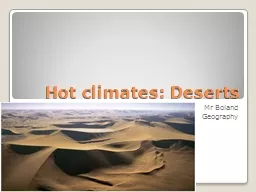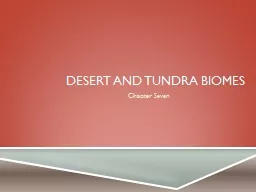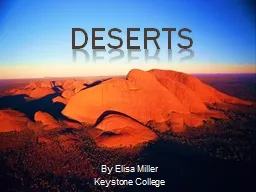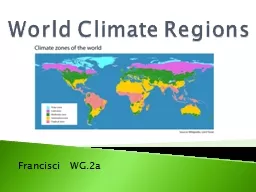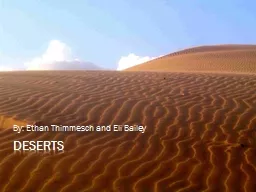PPT-Hot climates: Deserts
Author : faustina-dinatale | Published Date : 2018-01-17
Mr Boland Geography Where are deserts found What have all deserts got in Common Where are deserts in the path of the trade winds 15 and 30 degrees north and south
Presentation Embed Code
Download Presentation
Download Presentation The PPT/PDF document "Hot climates: Deserts" is the property of its rightful owner. Permission is granted to download and print the materials on this website for personal, non-commercial use only, and to display it on your personal computer provided you do not modify the materials and that you retain all copyright notices contained in the materials. By downloading content from our website, you accept the terms of this agreement.
Hot climates: Deserts: Transcript
Download Rules Of Document
"Hot climates: Deserts"The content belongs to its owner. You may download and print it for personal use, without modification, and keep all copyright notices. By downloading, you agree to these terms.
Related Documents

